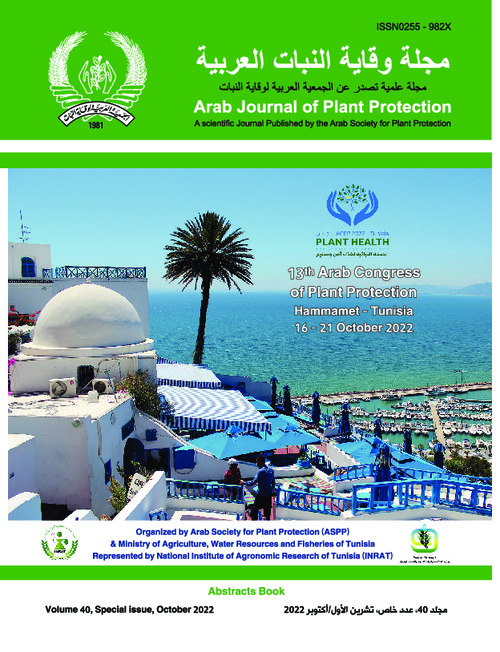Comparison of serological and molecular methods for diagnosis of viruses causing yellowing and stunting symptoms for the pulse crops
Abstract
The diagnosis of plant viruses that belong to the families Solemoviridae and Tombusviridae, which cause yellowing and stunting symptoms, is very complicated due to the serological cross-reactivity among these viruses. The main objective of this research was to study the efficiency of serological assays (tissue-blot immunoassay-TBIA) using specific monoclonal antibodies (MAbs) versus molecular assays (RT-PCR and sequencing) using generic and specific primer pairs. Legume samples (faba bean, chickpea and lentil) were collected from five different geographic regions: Ethiopia (11 samples), Lebanon (8 samples), Morocco (5 samples), Sudan (33 samples) and Uzbekistan (34 samples). All these samples reacted positively by TBIA with one or more MAbs and amplified by one or more primer pairs by RT-PCR. The comparison of serological with molecular results revealed the similarity between detection methods for both Bean leafroll virus (BLRV) and Soybean dwarf virus (SbDV) (both belong to genus Luteovirus, family Tombusviridae), as BLRV was detected in samples from Uzbekistan, and SbDV was detected in samples from Ethiopia and Uzbekistan only. On the other hand, the results of the serological and molecular methods for the virus species that belong to the genus Polerovirus (family Solemoviridae) were not comparable, especially in the samples collected from Sudan and Uzbekistan, as a number of samples collected from the five countries reacted positively with specific MAbs of Beet western yellows virus (BWYV) and Chickpea chlorotic stunt virus (CpCSV), but CpCSV and BWYV were identified only molecularly in the samples collected from Ethiopia, Lebanon and Morocco. Based on the nucleotide sequences obtained, new virus species that belong to the genus Polerovirus was identified in the samples collected from Sudan and Uzbekistan (e.g. Cucurbit aphid-borne yellows virus (CABYV) and Cotton leafroll dwarf virus (CLRDV)), and CpCSV was not identified molecularly in the samples from Uzbekistan or Sudan, in spite of the fact that a number of samples did react serologically with CpCSV MAb. The results obtained clearly showed that molecular assays are essential along with serological assays for more accurate and specific identification of Solemoviridae members, which is highly needed for the development of management strategies based on virus vector control and breeding for virus diseases resistance

